5 Reasons to Plant a Texas Redbud Tree
The Texas Redbud Tree (Cercis canadensis var. texensis) caught my eye the first year I moved to Texas. Starting in March, its bare branches are overtaken by bright purple flowers. When in bloom it is hard to miss!
There is a small tree in our neighborhood that puts me in the best mood each spring. Its beautiful blooms signal warmer days ahead!
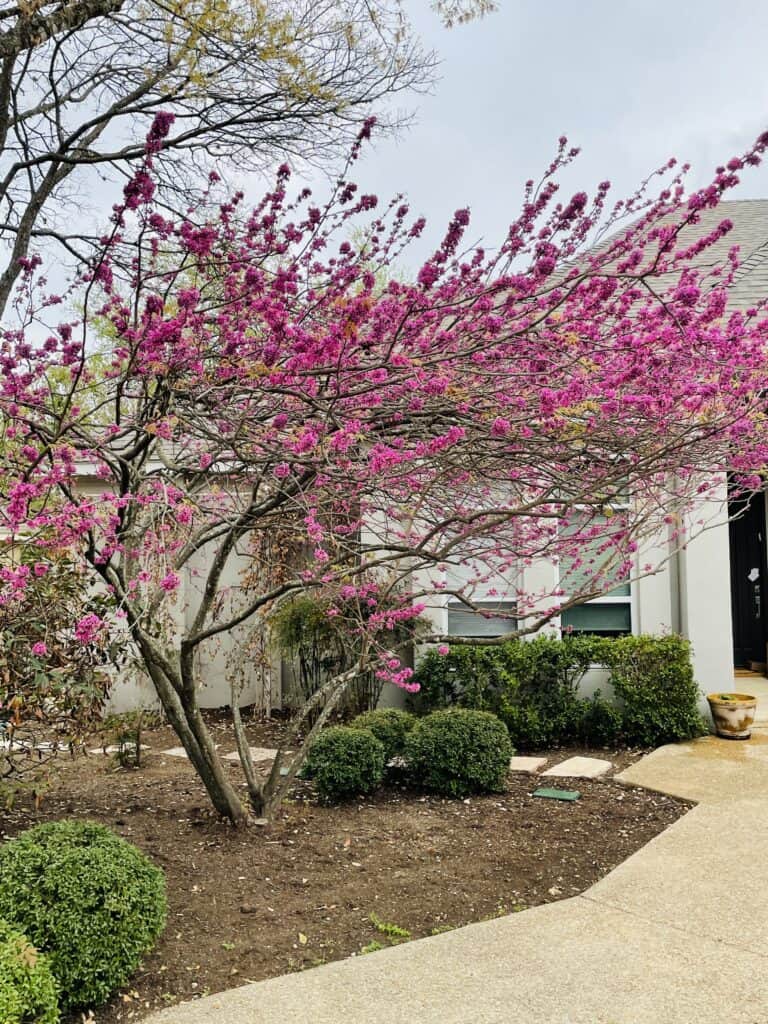
If you live in Central Texas, the Texas Redbud tree is an awesome addition to your landscaping. Your yard will be the prettiest one on the block between the months of March and April! This small deciduous tree is drought tolerant and likes partial shade during the hot summer months.
Be sure to download my free printable PDF of 5 Texas Flowering Trees. You can take this handy one-pager with you to the plant nursery.
5 Reasons to Grow a Texas Redbud Tree
1) Vibrant spring color
Its showy flowers are the most obvious attraction of the Texas Redbud tree. It boasts pinkish purple, almost magenta, flowers during March and April.
The flowers bloom before the leaves open, making them even more striking and noticeable against the bare branches. Bring spring indoors by cutting a few branches for a gorgeous bouquet!
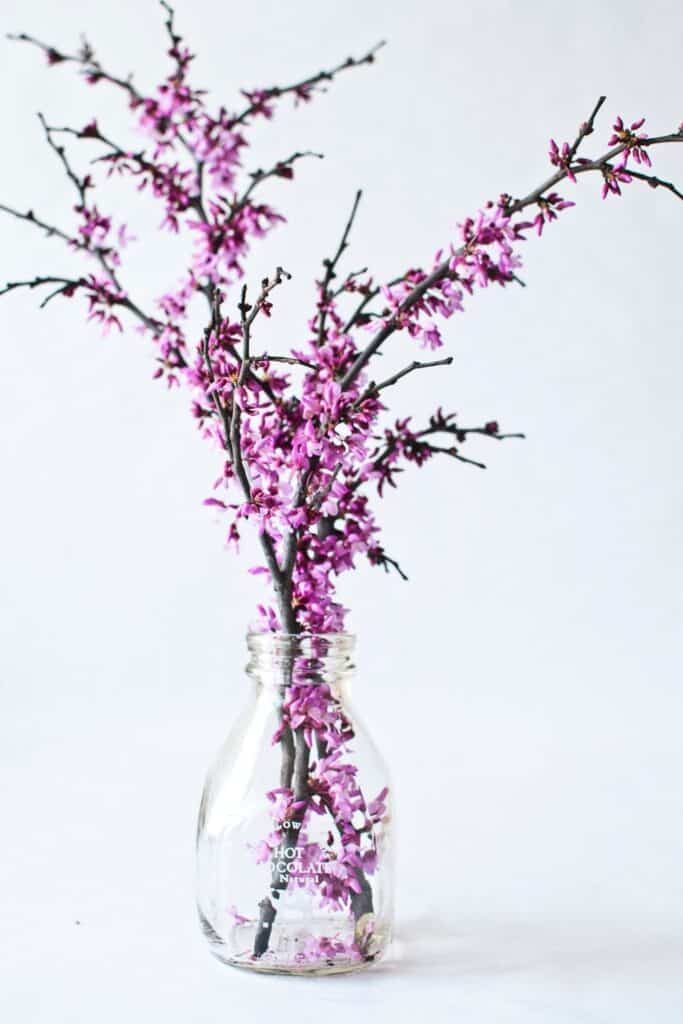
Here in San Antonio, it is one of the first things to bloom in the spring along with the Texas Mountain Laurel, another favorite tree of mine. Plant one of each tree and your yard will look and smell heavenly each spring!
2) Year-round interest
The redbud flower color is one of its best features. However, spring isn’t the only time you can enjoy the Texas Redbud. It offers interest in each of the seasons. Its dark green foliage color in the summer changes to a golden yellow in the fall before dropping from the tree. In the winter, the tree is covered in purplish seed pods.
3) Food for insects and wildlife
This is an important criteria for me when adding new plants to my yard. I want to be able to support insects and wildlife with native plants. The Texas Redbud tree does this in a few ways:
- Its blooms provide a great source of nectar for bees and other pollinators in the spring when other flowering plants are still dormant.
- It is the a host plant for the Henry’s Elfin butterfly. This butterfly lays its eggs on Redbud trees.
- Birds like to eat its seeds in the winter.
- Deer will browse on its foliage (which can be a bad thing too!). You may need to put up a fence around young redbud trees to protect them from deer.
4) Drought tolerant and low maintenance
The Texas redbud is more drought tolerant than other species of Redbud trees. It has adapted to the hot and dry summers of Central Texas and does well in well-drained soils. It likes the alkaline soils common in this area.
5) Easy to find at nurseries
Texas Redbud tends to be more readily available at a nursery than other native Texas trees. It has been used in the nursery trade as a small ornamental tree for quite awhile. Its size makes it great for planting in smaller spaces or as a focal point in a small garden.
What does the Texas Redbud tree look like?
The Texas Redbud (Cercis canadensis var. texensis) is a small tree or large shrub. It typically grows between 10-20 feet tall and is multi-trunked. It is considered an understory tree and while it can handle full sun, it does best with partial sun during hot summer afternoons.
Its leathery leaves are heart shaped with with wavy margins. The dark green leaves turn yellow or red in the fall. It is a deciduous tree, which means it drops its leaves in the winter.
Starting in March, its bare branches are covered in magenta buds that turn into lavender-pink flowers and remain on the tree until leaves start to open in April.
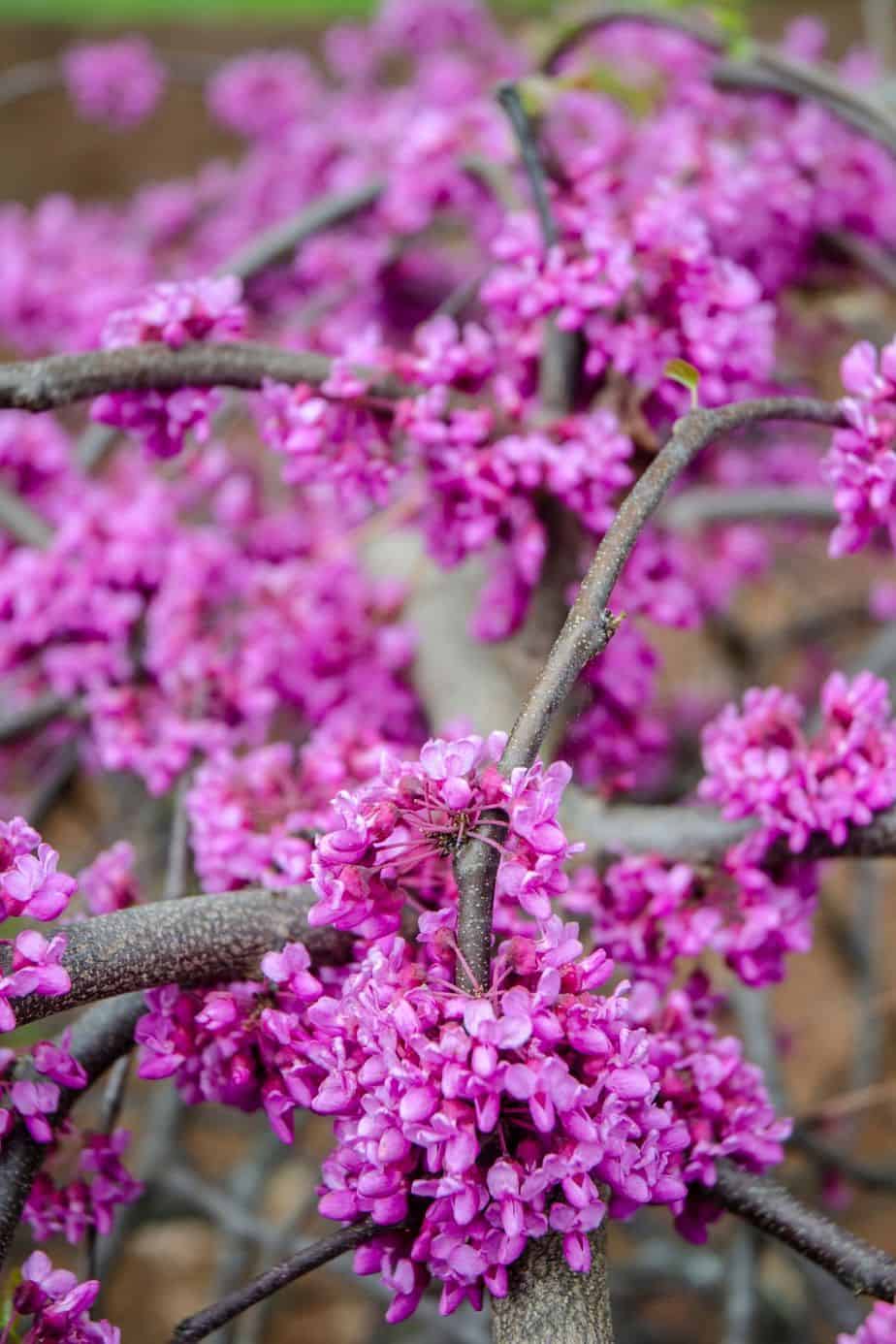
When is the best time to plant a Texas redbud tree?
The best time to plant a redbud tree is in early spring. You can purchase small redbud trees at the nursery, but you can also propagate them from seed. The seed needs to be scarified (scratched with sand paper) and cold stratified (stored in the fridge for a few months) before planting for best results.
Where is the Texas Redbud tree native to?
Cercis canadensis var. texensis is native to southern Oklahoma through central Texas and northern Mexico. However it is cold hardy through USDA Hardiness Zone 6.
What are other Texas Native Redbuds?
In addition to the Texas Redbud, there are two other types of redbud trees in the Genus Cercis native to Texas:
1) Eastern Redbud (Cercis canadensis)
This is the eastern relative of the Texas Redbud. The Eastern Redbud’s native habitat stretches along the Eastern United States from New Jersey south to Florida and west to the Eastern part of the Midwest states. It also happens to be the state tree of Oklahoma.
The Eastern Redbud tends to be larger than the Texas Redbud, with larger and brighter green leaves. It also likes more moisture and more acidic soil.
2) Mexican Redbud (Cercis canadensis var. mexicana)
This shrubbier smaller version of the redbud can be found in West Texas. It is smaller and even more drought tolerant than the Texas Redbud.
In addition to these Texas native species, there are a number of redbud varieties and cultivars that can be found at the nursery such as Texas White Redbud which has white flowers. In general, try to choose a straight native species over a cultivar for optimal wildlife benefits.
What are other spring blooming Texas trees?
There are several other great native Texas trees that you can add to your yard for spring color. Here are my favorites for Central and South Texas. Learn more about each of them here:
- Texas Mountain Laurel
- Huisache
- Mexican Plum
- Retama
Download the Free PDF: 5 Texas Flowering Trees
I created a handy one-page PDF for you to print and take with you to the plant nursery. It includes a thumbnail photo of each plant along with its common and scientific names, size, sun needs and more! Get it here:
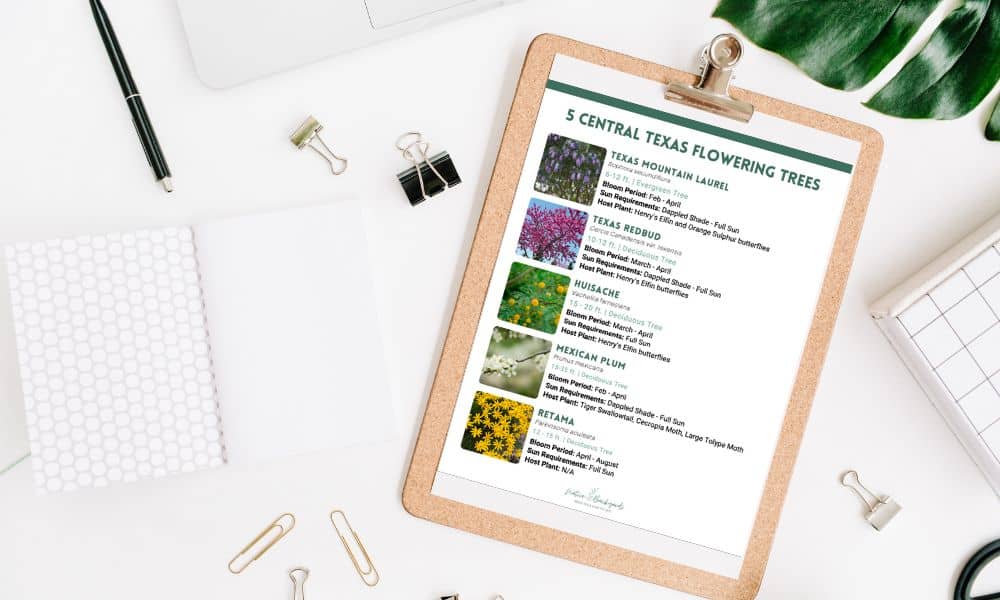
Why is it important to grow native plants?
If you add any new tree or plant to your yard, make it a native! Native plants are the foundation of a healthy ecosystem. These plants have evolved in your local area, while non-native plants were introduced from other countries. Native plants:
- Are important food source to plant-eating insects and wildlife
- Serve as host plants to butterflies and moths
- Require less water and maintenance
- Support more species than non-native plants
If you are new to native plants be sure to read the Top 6 Benefits of Native Plants in Your Yard. The majority of our yards are currently filled with non-native plants so there are lots of opportunities to swap in some natives and help the environment!
Pin this to spread the word about native trees!
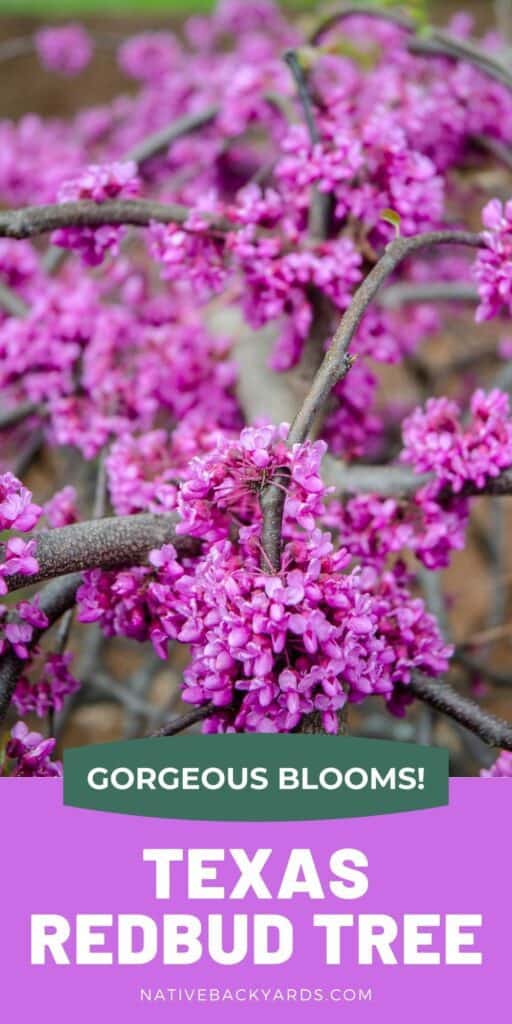

Welcome to Native Backyards! I’m Haeley from San Antonio, Texas, and I want to help you grow more native plants.
I have seen firsthand how the right plants can bring your yard to life with butterflies, bees, and birds. I’ve transformed my yard with Texas natives and I’m excited to share what I’ve learned with you.
Join my newsletter here! – each week I’ll send you helpful tips to make your native plant garden a reality!
Want to learn more about me and my garden? Check out my About page!
